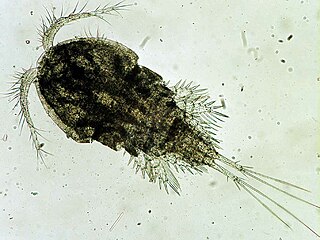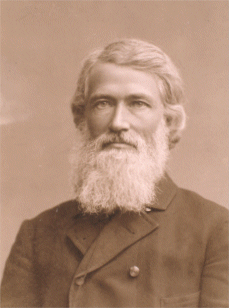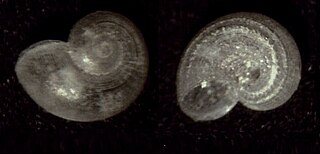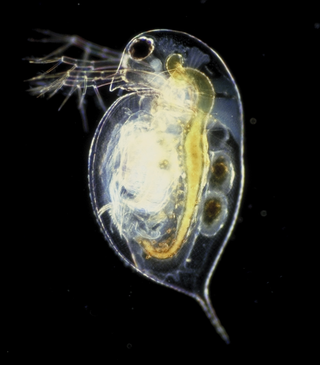Virus classification is the process of naming viruses and placing them into a taxonomic system similar to the classification systems used for cellular organisms.

Under the Whyte notation for the classification of steam locomotives, 0-4-0 represents one of the simplest possible types, that with two axles and four coupled wheels, all of which are driven. The wheels on the earliest four-coupled locomotives were connected by a single gear wheel, but from 1825 the wheels were usually connected with coupling rods to form a single driven set.

Horseshoe bats are bats in the family Rhinolophidae. In addition to the single living genus, Rhinolophus, which has about 106 species, the extinct genus Palaeonycteris has been recognized. Horseshoe bats are closely related to the Old World leaf-nosed bats, family Hipposideridae, which have sometimes been included in Rhinolophidae. The horseshoe bats are divided into six subgenera and many species groups. The most recent common ancestor of all horseshoe bats lived 34–40 million years ago, though it is unclear where the geographic roots of the family are, and attempts to determine its biogeography have been indecisive. Their taxonomy is complex, as genetic evidence shows the likely existence of many cryptic species, as well as species recognized as distinct that may have little genetic divergence from previously recognized taxa. They are found in the Old World, mostly in tropical or subtropical areas, including Africa, Asia, Europe, and Oceania.
Diaphanidae is a taxonomic family of small sea snails, marine opisthobranch gastropod molluscs or micromollusks in the superfamily Diaphanoidea, the headshield slugs and bubble snails.

Cyclops is one of the most common genera of freshwater copepods, comprising over 400 species. Together with other similar-sized non-copepod fresh-water crustaceans, especially cladocera, they are commonly called water fleas. The name Cyclops comes from the Cyclops of Greek mythology, as they have a single large eye; in Cyclops, the eye may be either red or black.

Thyasiridae is a family of bivalve molluscs, including the cleft clams, in the order Lucinida.

Philine is a genus of sea slugs or sea snails, marine gastropod molluscs in the subfamily Philininae of the family Philinidae, the headshield slugs or paper bubbles.

Johan Ernst Welhaven Sars was a Norwegian professor, historian, author and editor. Assuming perspectives from the positivism philosophical school, his main work was Udsigt over den norske Historie, four volumes issued from 1873 to 1891. He co-edited the magazines Nyt norsk Tidskrift from 1877 to 1878, and Nyt Tidsskrift from 1882 to 1887. He was politically active for the Liberal Party of Norway and among the party's most central theoreticians.

Oenopota is a genus of sea snails, marine gastropod mollusks in the family Mangeliidae.

Skenea is a genus of small to minute sea snails, marine gastropod mollusks in the family Skeneidae.

Cyclostrema is a genus of sea snails, marine gastropod mollusks in the family Liotiidae.

Daphnia is one of the three subgenera of the genus Daphnia, the others being Australodaphnia and Ctenodaphnia.

Hemiaclis is a genus of sea snails, marine gastropod mollusks in the family Eulimidae.

Betacoronavirus is one of four genera of coronaviruses. Member viruses are enveloped, positive-strand RNA viruses that infect mammals, including humans. The natural reservoir for betacoronaviruses are bats and rodents. Rodents are the reservoir for the subgenus Embecovirus, while bats are the reservoir for the other subgenera.

Clavularia is a genus of corals in the family Clavulariidae. They are often referred by the common names star polyps or clove polyps.

The South Australian Railways Gb Class locomotives were built by Robert Stephenson and Company in 1874 and 1878 for the Glenelg Railway Company, later being acquired by the South Australian Railways (SAR) on 16 December 1899. The engines were sold to the Adelaide Glenelg & Suburban Railway Company as No. 4 and 5, then subsequently sold to the Glenelg Railway Company in November 1881 with the same numbers. When the SAR purchased the Glenelg Railway Company in 1899, they were classed Gb and renumbered 158 and 159. No. 158 was scrapped in December 1904, while No. 159 persisted until 21 February 1916, then ultimately scrapped in 1922.
Diving equipment may be exposed to contamination in use and when this happens it must be decontaminated. This is a particular issue for hazmat diving, but incidental contamination can occur in other environments. Personal diving equipment shared by more than one user requires disinfection before use. Shared use is common for expensive commercial diving equipment, and for rental recreational equipment, and some items such as demand valves, masks, helmets and snorkels which are worn over the face or held in the mouth are possible vectors for infection by a variety of pathogens. Diving suits are also likely to be contaminated, but less likely to transmit infection directly.
Oxydromus is a genus of annelids belonging to the family Hesionidae.
Phylo is a genus of polychaetes belonging to the family Orbiniidae.













